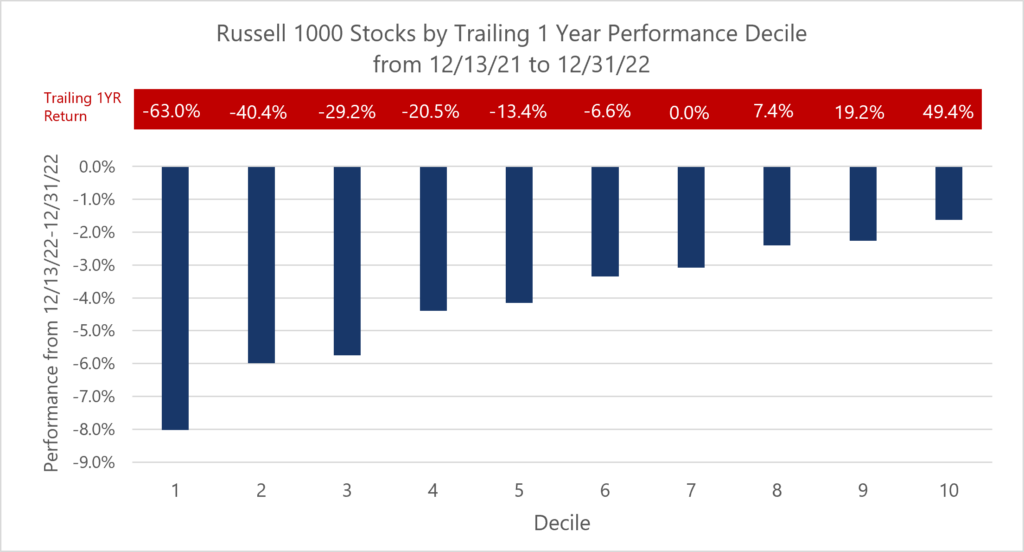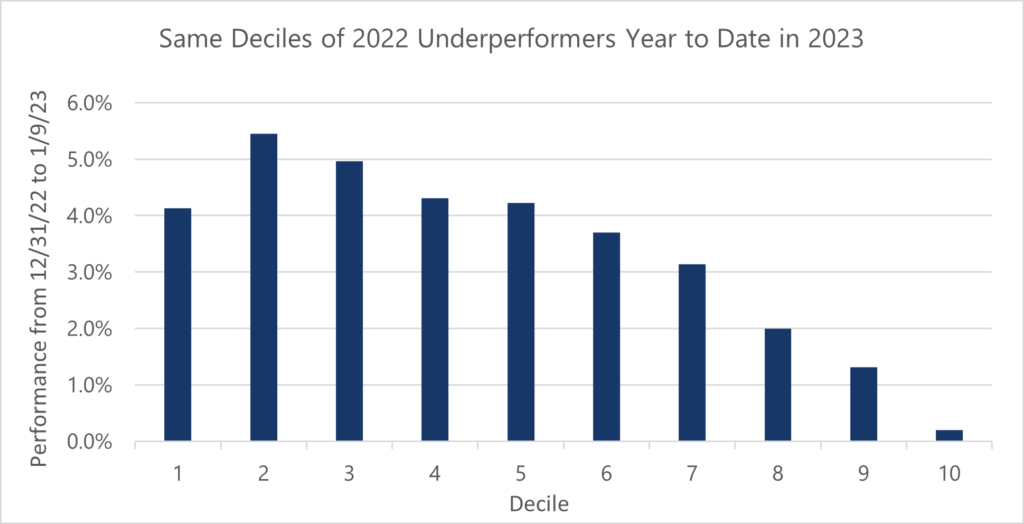2022’s grim returns in nearly all assets presented historic tax-loss selling, evidenced by December’s late decline
Many investors, including ourselves, may have been puzzled by the poor market returns we saw in the last few weeks of December. Despite the positive market reaction to lower-than-expected inflation on December 13th[1], the Russell 1000 Index ended the month 5.95% lower[2] than it started. We believe a portion of this decline may have been due to tax loss selling as poor returns across assets in 2022 provided ample opportunities to reduce future tax obligations. Although the popular “January effect[3]” has mixed historical evidence, we may see or may be in the process of seeing a reversal of those year-end trends to start 2023.
We segmented the entire Russell 1000 into groups of 100 (deciles) corresponding to their trailing one-year performance coming into the recent December 13th peak in the market. The worst performing stocks, those that present the best tax-loss selling opportunities, substantially underperformed the best and as the chart shows the relationship held consistently in the last few weeks of the year.

Source: Price data for constituents of the Russell 1000 Index from Bloomberg for 12/13/2021 to 12/13/2022. Performance shown on the table is from 12/13/2022 to 12/31/2022.
As the market has bounced back in 2023, so far we have seen a complete reversal. The same underperforming stocks are now generally outperforming.

Source: Price data for constituents of the Russell 1000 Index from Bloomberg for 12/13/2021 to 12/13/2022. Performance shown on the table is from 12/31/2022 to 1/09/2023.
This may imply they were indeed “oversold” from tax loss pressure into year-end. While it is possible we may see this trend continue a bit further into the new year, we believe the most important takeaway is that investors should yield caution in conflating short-term price moves with a true change in the outlook of an investment. While it was wise to ignore the poor performance which came from little fundamental development at the end of December, it may also be wise to also ignore the strong recoveries from 2022’s weakest companies in January so far.
[1] BLS CPI release. Consumer Price Index Summary – 2022 M11 Results (bls.gov)
[2] Bloomberg data 11/30/2022 through 12/13/2022
[3] The “January Effect” is the idea that January is an anomalously positive month for stocks historically. The main hypothesis for the alleged January effect comes from investors incentive to take losses before year-end for tax purposes. After year-end they are free to re-invest perhaps driving abnormally strong performance in the first month of the year. In addition, the calendar year may encourage investment flow for other reasons such as year-end bonuses, new allocation plans or re-balancing of portfolios.




